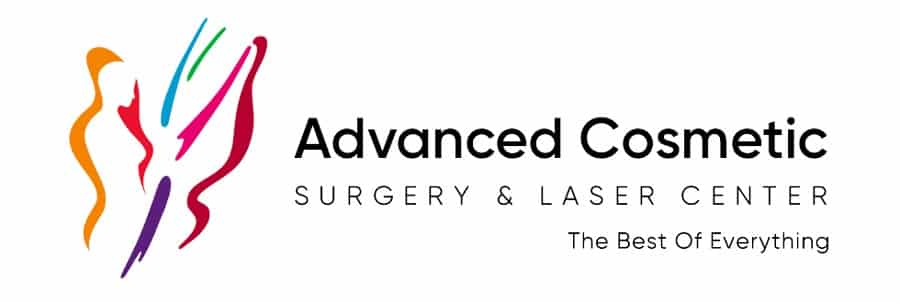Since the late 1990s, platelet-rich plasma (PRP), a ground-breaking procedure, has been applied in the field of facial plastic surgery. It is a method that concentrates a mixture of platelets, growth factors, and other elements necessary for healing and tissue regeneration using a patient’s own blood. Numerous applications, including orthopedics, sports medicine, and wound healing, have shown this therapy to be quite beneficial. PRP, however, has genuinely excelled in the realm of facial plastic surgery, giving patients a safe, non-invasive option for looking younger.
PRP has a long history, starting with the discovery in the 1970s that platelets, the blood cells in charge of clotting, also included a variety of growth factors and other elements vital for tissue regeneration. PRP was not originally utilized in the field of facial plastic surgery until the late 1990s, with Dr. Jon Mendelsohn being a pioneer in this area and a double board-certified facial plastic surgeon.
Since 1999, Dr. Mendelsohn has been employing PRP in his practice and has personally witnessed the incredible advantages this therapy may provide patients. He has developed innovative ways to use PRP in conjunction with other procedures like microneedling and dermal fillers to provide genuinely revolutionary results throughout the years.
References:
- Mendelsohn, J. (2014). Platelet-rich plasma: history and potential for facial rejuvenation. Facial Plastic Surgery Clinics of North America, 22(4), 483-491.
- Sclafani, A. P., & McCormick, S. A. (2012). Induction of dermal collagenesis, angiogenesis, and adipogenesis in human skin by injection of platelet-rich fibrin matrix. Archives of Facial Plastic Surgery, 14(2), 132-136.
- Eppley, B. L., Woodell, J. E., & Higgins, J. (2004). Platelet quantification and growth factor analysis from platelet-rich plasma: implications for wound healing. Plastic and Reconstructive Surgery, 114(6), 1502-1508.
PRP is now utilized in numerous facial plastic surgery treatments, such as facelifts, brow lifts, and eyelid surgeries. It is also used as a stand-alone treatment for UV damage, fine lines, wrinkles, and acne scars, among other skin problems.
A small amount of the patient’s blood is typically drawn during the PRP procedure, and the platelets and other blood components are separated from the rest of the blood using a centrifuge. After being injected into the patient’s skin, the PRP mixture helps to make collagen and other important substances. This helps the tissue to heal and grow back.
Although PRP is still a relatively new technique in facial plastic surgery, it has already proven to be very successful and is quickly gaining favor with both patients and doctors. Patients can now take advantage of the advantages of natural, non-invasive facial rejuvenation without the need for surgery or other more intrusive procedures, thanks to the groundbreaking work of Dr. Jon Mendelsohn and others in the area.
Platelet Rich Plasma
- Platelet Rich Plasma (PRP) treatments are gaining more and more popularity around the world as the lasting, beneficial effects are seen from this therapy. It is the perfect solution to not only help correct crepiness and fine lines on the face, neck and chest, but also to prevent visible signs of aging in our skin.
What is Platelet Rich Plasma with microneedling?
- Platelet Rich Plasma refers to a portion of your whole blood that contains elements intended to promote collagen synthesis, heal and repair structures in the tissues of the body.
- Utilization of platelet rich plasma has been applied in various aspects of medicine since the 1970’s, including orthopedics to repair ligaments and build cartilage as well as in wound clinics to aid in wound healing.
- In more recent years, PRP has been utilized in aesthetic medicine for skin rejuvenation.
* Based on agreed upon expectations and goals achieved through the consultative process.
How long do the results last?
Since the PRP is actually generating new collagen amongst other healthy components in your own skin, this will only be depleted trough the natural aging process. It is recommended to maintain your skin health with a PRP treatment every 6 months or so.
Are there any risks to this procedure?
Platelet Rich Plasma is autologous, which means it is obtained from your own body, so it is virtually impossible to have a reaction to the PRP. As long as you follow your practitioner’s instructions for post-care, the area should heal quickly after treatment. There can be minimal swelling, especially in the under eye area and there is a low risk of developing a bruise.
How much downtime is there with Platelet Rich Plasma and Microneedling treatment?
One great benefit with microneedling and Platelet Rich Plasma (PRP) skin treatments is that there is little to no downtime and they are the best non-surgical option in Cincinnati for static wrinkles, crepiness and loose skin! To be cautious, you should plan on 1-3 days downtime depending on the the areas and conditions being treated. Typical downtime is as follows:
Day 1 (Day of Procedure) – Immediately following your procedure, the treated area will be red and marks will be visible from the patterns of the microneedling treatment. This day you will want to avoid sun exposure and avoid working out (sweating). This treatment doesn’t get the name Vampire Lift for no reason, you will have blood product on the surface of your skin!
Day 2 (Day after Procedure) – You may wash your face with a gentle cleanser in the morning and this will rinse away most of the evidence from your treatment. You will still have some marks from the microneedling and a little swelling under the eyes/around mouth is possible. You may work out this day, just remember to wash area with gentle cleanser afterwards and apply your post-procedure products.
Day 3 – The marks from microneedling should be easily covered with light mineral makeup. Swelling shouldn’t be visible at this point. You may resume your normal skin care routine.
What is the difference between PRP injection and fillers?
Platelet rich plasma application with microneedling and injection addresses the integrity of the skin and fillers address areas of volume loss. For example, the appearance of the under eyes are a very common issue for many men and women. We hear that their eyes look tired, that they look concerned or angry. This is due to a few different reasons. One is the concavity in the tear trough of the lower eye (where we have a shadow). This hallow must be treated with filler to correct the concavity. The other issue we have is due to skin aging, the skin under the eye becomes loose, with a thin, crepey appearance. By treating this with platelet rich plasma, we are creating a thicker, more toned skin. This creates a more youthful appearance, with tighter skin and less of dark circle under the eye.

